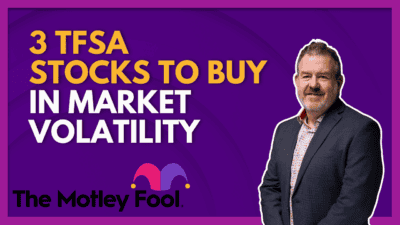If I presented an investor with two stocks that were identical in every way, but one paid a 4% dividend and the other didn’t, which one do you think most investors would choose?
The answer is pretty obvious. I’d say at least 90% of investors would pick the dividend payer. Sure, the non-payer could arguably have greater potential to outperform since it would be reinvesting all its earnings into growing the business, but investors like the stability of a company that rewards them for being a shareholder each and every quarter.
Dividends are so valued by investors that a dividend cut can send shares of an otherwise healthy company reeling. Sometimes, during tough times, it’s feasible to cut or even eliminate the dividend, choosing to redeploy that cash into paying off debt or making improvements in the business. However, this matters little to investors who are hungry for yield, so they tend to hit the sell button.
Investors must be careful to avoid companies that have overly generous dividends. Here are three that I’d encourage income investors to avoid.
Enbridge
It’s been good to be a shareholder in Enbridge (TSX: ENB)(NYSE: ENB), one of Canada’s largest pipeline companies, as shares are up more than 160% over the past five years. Revenue has more than doubled since 2009, and oil prices have recovered nicely. This has led to the company’s dividend consistently going up, almost doubling during that time. The current yield is 2.75%.
One look at the income statement, though, and it’s obvious that business is going to need to improve for the company to continue growing its dividend at such an aggressive pace. Operating income has barely budged since 2010, and is actually down almost 50% compared to 2011, and since 2010, the company has increased its share count by nearly 10%. Enbridge has put itself in a position where it has to pay an increased dividend on more shares, all while barely growing earnings.
The company has grown its debt load by more than 50% since 2010 as well. With analysts suggesting that revenue growth for 2014 and 2015 will be tepid at best, I find it hard to paint a bullish long-term picture of the company. Even if it gets approval to build its Northern Gateway pipeline, we’re at least a few years away from any revenue coming from it.
Crescent Point
People looking for monster dividends from the oil patch will often look at Crescent Point Energy (TSX: CPG)(NYSE: CPG) and its 6.2% yield. But this dividend has some major issues underneath the surface.
The company’s management gives investors the option to take their dividends in additional shares, and will let them do so at a 5% discount to the market price. This has certainly been a factor in the company increasing its share count by nearly 50% since the end of 2010, which is a serious dilution since total shareholders’ equity hasn’t kept up the same pace. A cash dividend option exists, but it’s more lucrative for investors to take shares.
For investors to actually get cash from those dividends, they must sell the additional shares. Not only does this action trigger brokerage costs, but could also have tax implications as well. For these reasons, Crescent Point’s dividend isn’t as attractive as it appears.
Teck Resources
Even though I’m bullish on the long-term prospects of Teck Resources (TSX: TCK.B)(NYSE: TCK), short-term weakness in the metallurgical coal market will weigh on the shares, and could possibly lead to a dividend cut.
Almost 50% of the company’s earnings come from coal, the majority of which gets shipped over to China. If the Chinese economy has any sort of sustained weakness, this will further put pressure on the price of steel, which is already low. Since both coal and iron ore are major ingredients in making steel, they suffer just as much if China suffers.
Teck has a solid balance sheet and is sitting on more than $2 billion in cash, but could easily decide to cut or even scrap its $0.90 per share dividend and choose to use the $500 million annual savings to pay down debt or expand its oil business, which management is quite excited about. Long term, those are prudent moves.

 Don't let our Poutine Day offer get cold: 65% off Stock Advisor ends at midnight!
Don't let our Poutine Day offer get cold: 65% off Stock Advisor ends at midnight!







